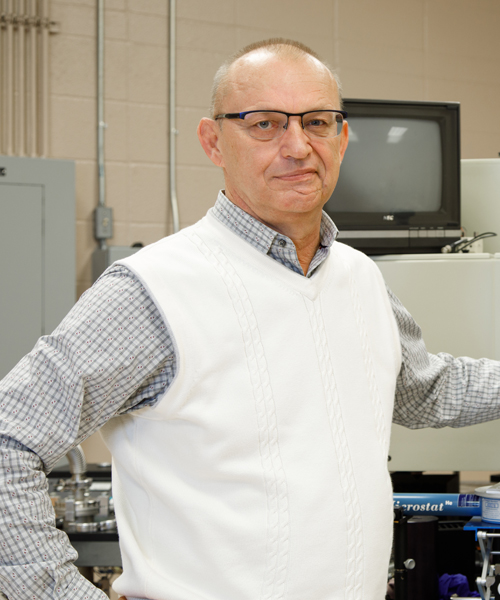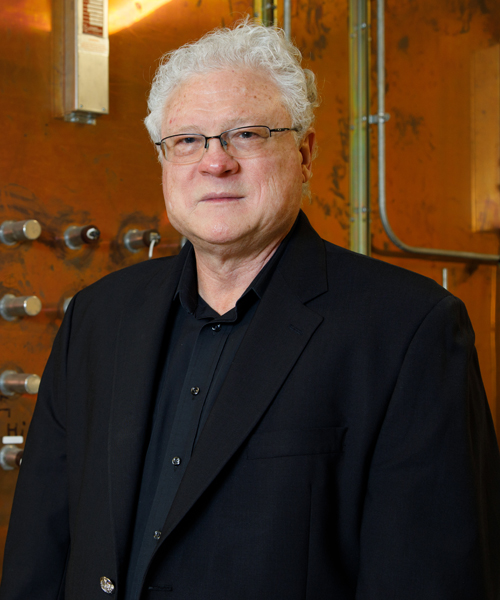TcSUH EventS

Bi-Weekly Seminar
Single Molecule Studies of Disease-Related Biological Processes
by: Christy Landes
Date: Friday August 03, 2007
Time: 12:00 pm – 1:00 pm
Location: Houston Science Center – Building 593 — Room 102
Overview
Biological processes are often heterogeneous. Single molecule spectroscopy allows us to distinguish between multiple pathways in disease progression or drug/pathogen interactions. Thus, it is possible to identify, for example, which steps are most amenable to drug therapy. The experimental technique is especially powerful when combined with simulations in which we model processes such as protein-nucleic acid binding. I will discuss the recent progress in our group using single molecule fluorescence resonance energy transfer (SMFRET) and fluorescence correlation spectroscopy (FCS) to study retroviral chaperone steps and model macular degeneration inhibitor
Back to TcSUH News & Events

Bi-Weekly Seminar
Optical and Electronic Properties of Zn4Sb3 Thermoelectrics
by: Dr. Alexander P. Litvinchuk
Date: Friday July 20, 2007
Time: 12:00 pm – 1:00 pm
Location: Houston Science Center – Building 593 — Room 102
Overview
We will report on an experimental study of optical and electronic properties of Zn4Sb3, an excellent thermoelectric material, across the structural ß-α transition using optical techniques. The phase transition from highly disordered high temperature ß phase into low symmetry ordered &alpha phase is shown to be accompanied by an increase of thermoelectric power and electrical conductivity, and also significant rise in the free charge carrier density. Concomitant with these electronic changes is an unexpected increase in the carrier scattering rate, which exhibits features of localization.
Back to TcSUH News & Events
Special Seminar
Current State of the MgB2 Superconductor and Devices Development at Columbus Superconductors
by: Dr. Giovanni Grasso
Date: Tuesday May 29, 2007
Time: 11:00 am – 12:00 pm
Location: Houston Science Center – Building 593 — Room 102
Overview
Six years is a limited amount of time to bring a new material to a successful level of development. However, this is indeed happening for MgB2, as recently proven by a number of impressive news items coming from industries and institutions working on it. The capability of MgB2 wires and tapes to carry large currents at intermediate temperatures between those of liquid helium and liquid nitrogen has been recently demonstrated by the realization of a full scale prototype of an open MRI fully working system. Such a system contains many innovative features, such as the cryogenic-free operation and the innovative magnet design that reduces claustrophobia issues, as well as the use of as much as 18 Km of multifilamentary conductor. In this talk, the further progress of MgB2 wire development will be discussed, with the aim of drawing a realistic picture of the future impact of MgB2 on many superconducting devices.
Back to TcSUH News & Events

Bi-Weekly Seminar
Electromagnetic Probes of Enzymatic Activity in Live Organisms
Date: Friday May 25, 2007
Time: 12:00 pm – 1:00 pm
Location: Houston Science Center – Building 593 — Room 102
Overview
We report on measurements of the harmonics generated by live cells, mitochondria, photosynthetic organelles, and whole organisms in response to sinusoidal electric fields. The frequency and amplitude dependence of the induced harmonics correlate with physiological processes occurring in various enzyme complexes. The motion of charged residues and ions leads to a nonsinusoidal response to an applied sinusoidal field, leading to the generation of harmonics. For example, H+-ATPase, a proton pump that plays an important role in yeast (S. cerevisiae) generates harmonics that are affected by suitable inhibitors or substrates, such as vanadate or glucose. A high-Tc SQUID is used to measure its response at low frequencies (< 1 kHz). At higher frequencies the field capacitively couples through the plasma membrane and probes complexes within internal organelles. Some features in the frequency-dependent harmonics produced by whole cells appear to correlate with those seen in isolated mitochondria, which can be increased by adding substrates that activate the electron transport chain, or suppressed by inhibitors such as rotenone or antimycin A. Finally, both the linear and harmonic responses of whole leaves and thylakoid membrane (chloroplast) suspensions, responsible for photosynthesis in plants, are strongly affected by the presence or absence of light.
Back to TcSUH News & Events
Special Seminar
Theoretical Understanding of Rotational Symmetry Breaking in Sodium-Doped Cuprate Superconductors
by: Dr. Y. Chen
Date: Tuesday May 22, 2007
Time: 4:00 pm – 5:00 pm
Location: Houston Science Center – Building 593 — Room 102
Overview
The recent atomically resolved STM studies on strongly underdoped NaCCOC revealed a surprisingly complex pattern with the square symmetry of thelattice broken on a local scale. This has raised an interesting question about the origin of the broken local square symmetry. Our theoretical investigation shows that for reasonable parameters the single hole impurity state of t-t'-J model has a doubly degenerate ground state whose components can be represented as states with even (odd) reflection symmetry around the x(y)-axes. The conductance pattern for one state is anisotropic as the STM tip scans above the Cu-O-Cu bonds along the x(y)-axes. This strong anisotropy appears at lower voltages while much weaker anisotropy shows up at higher voltages. Our results agree qualitatively with recent experiments. In addition, we demonstrate that the satisfaction of low-energy sum rules shown in STM measurements strengthens the validity of the description of the low-energy physics by an effective single-band model instead of the three-band model. Some preliminary results will be discussed.
Back to TcSUH News & Events
